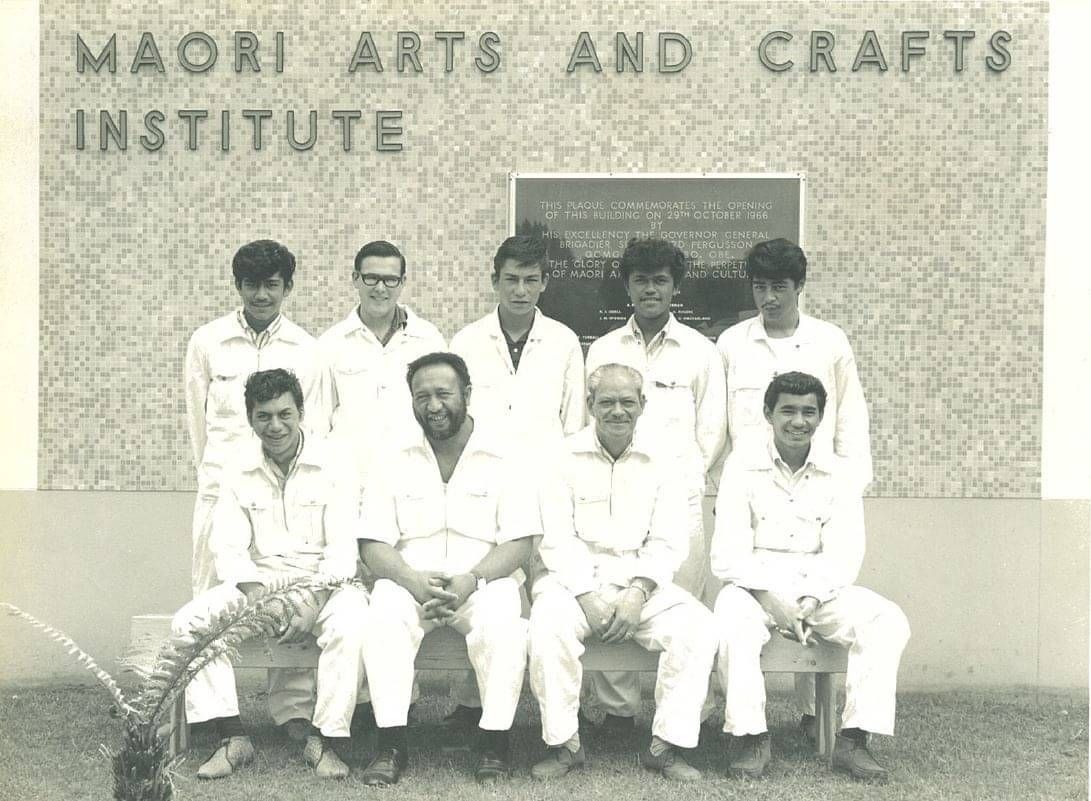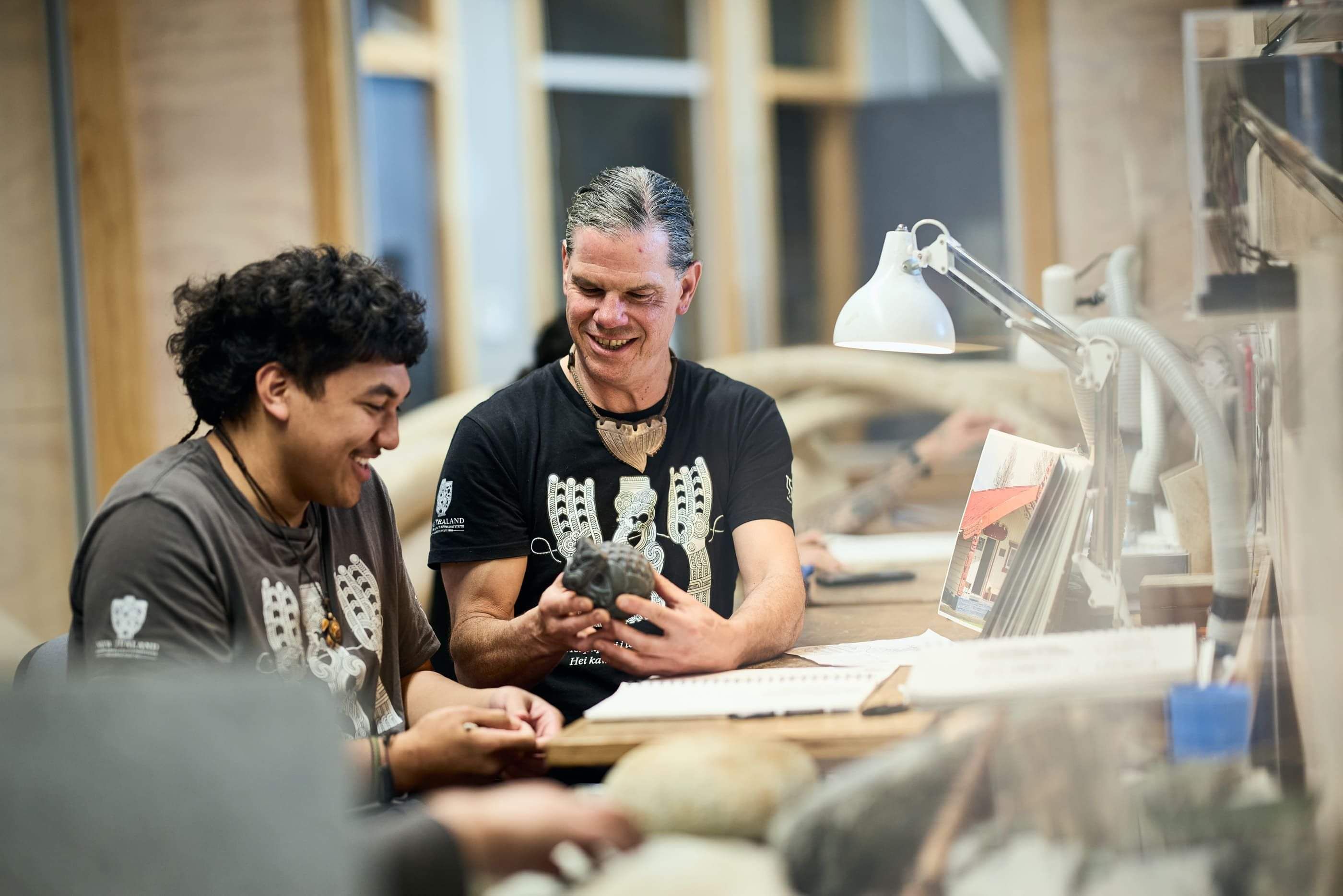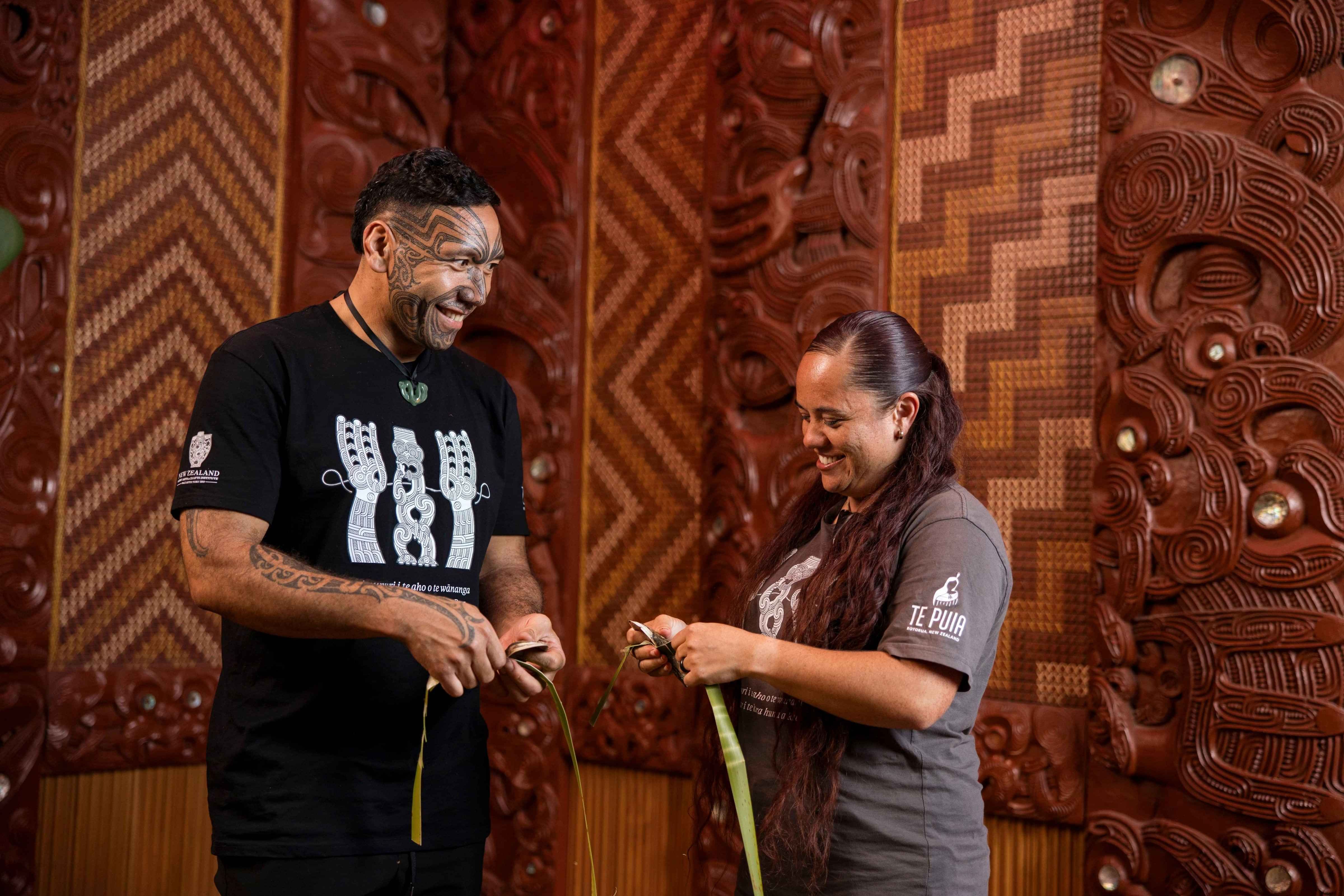new zealand māori arts and crafts institute
Uplifting Māori arts and crafts since 1926.

Our Whakapapa
1926
Legislation passed in Parliament which brought Tā Apirana’s vision to life, to establish centres of learning to maintain and preserve traditional practices for future generations.
1927
The first whakairo rākau carving school, Te Ao Mārama, opening on the shores of Lake Rotorua in 1927.
1932
The school moved to a larger premises at Whittaker Road.
1937
With the onset of the Great Depression and then World War II, the school closed.
1963
The New Zealand Māori Arts and Crafts Institute Act was implemented by the Government, due to a renewed focus on the perpetuation of Māori arts and crafts combined with Government investment in the growth of Te Whakarewarewa Valley’s tourism interests.
1967
Te Wānanga Whakairo Rākau o Aotearoa, the National Wood Carving School opened.
2011
Te Takapū o Rotowhio, the National Stone and Bone Carving School opened.
2016
Te Rito o Rotowhio, the National Weaving School opened.
2020
The New Zealand Māori Arts and Crafts Institute Vesting Act is with mana whenua owners through the Te Puia NZMACI Limited Partnership. The partners are Wāhiao Tūhourangi o Whakarewarewa, the Pukeroa Oruawhata Trust, and Ngāti Hurungaterangi, Ngāti Taeotū, and Ngāti Te Kahu o Ngāti Whakaue. Vesting means that Te Puia | NZMACI is iwi owned.
2025
NZMACI Foundation launched.
The New Zealand Māori Arts and Crafts Institute Vesting Act (2020) identifies six functions of the Institute
(Note these are carried over from the 1963 Act)
Encourage, foster, and promote ahurea and toi Māori (culture and Māori arts) of New Zealand.
Provide training for the iwi of New Zealand, including in whakairo rākau (carving) and raranga (weaving).
Make grants to enable persons to study, train, and gain experience in creating Māori arts and crafts or any other matter approved by the Partnership.
Confer diplomas or certificates on persons who have undertaken training or gained qualifications in Māori arts and crafts or Māori culture generally.
Provide and support demonstrations, exhibitions, and tours of toi Māori and toi whakaari Māori (performing arts) of New Zealand.
Provide for the sustainable development of scenic and tourist attractions in the Rotorua district and elsewhere.
"I’m proud to be a part of a legacy that’s purpose is to protect, promote and perpetuate the traditional arts of our tūpuna"
Tipene Oneroa (Te Rarawa Kaiwhare, Ngāti Rangiwewehi),
"I came to NZMACI aiming for success and the school has given me the tools to be successful – to utilise persistence, patience, perseverance, humility, resilience, respect and longevity to last the test of time"
Maaka Toi (Ngāpuhi, Ngāti Pikiao)
2025 Graduate from Te Takapū o Rotowhio
"Those of us who graduated and are now making a living from the art form are trailblazers for others. Tribally, young carvers come and communicate with us and ask for guidance"
Gordon Toi (Ngāpuhi)
1983 Graduate from Te Whakairo Rākau o Aotearoa




